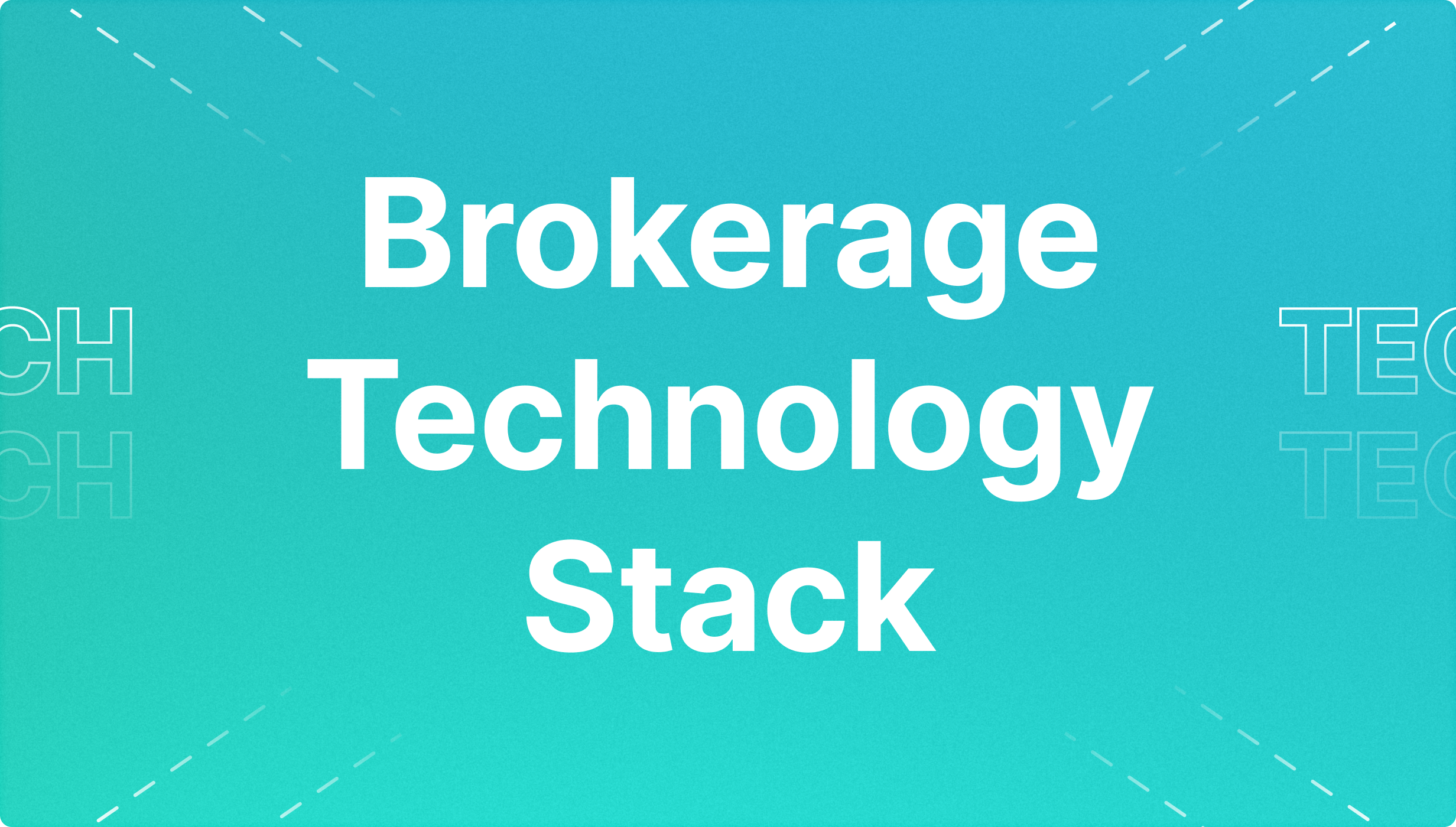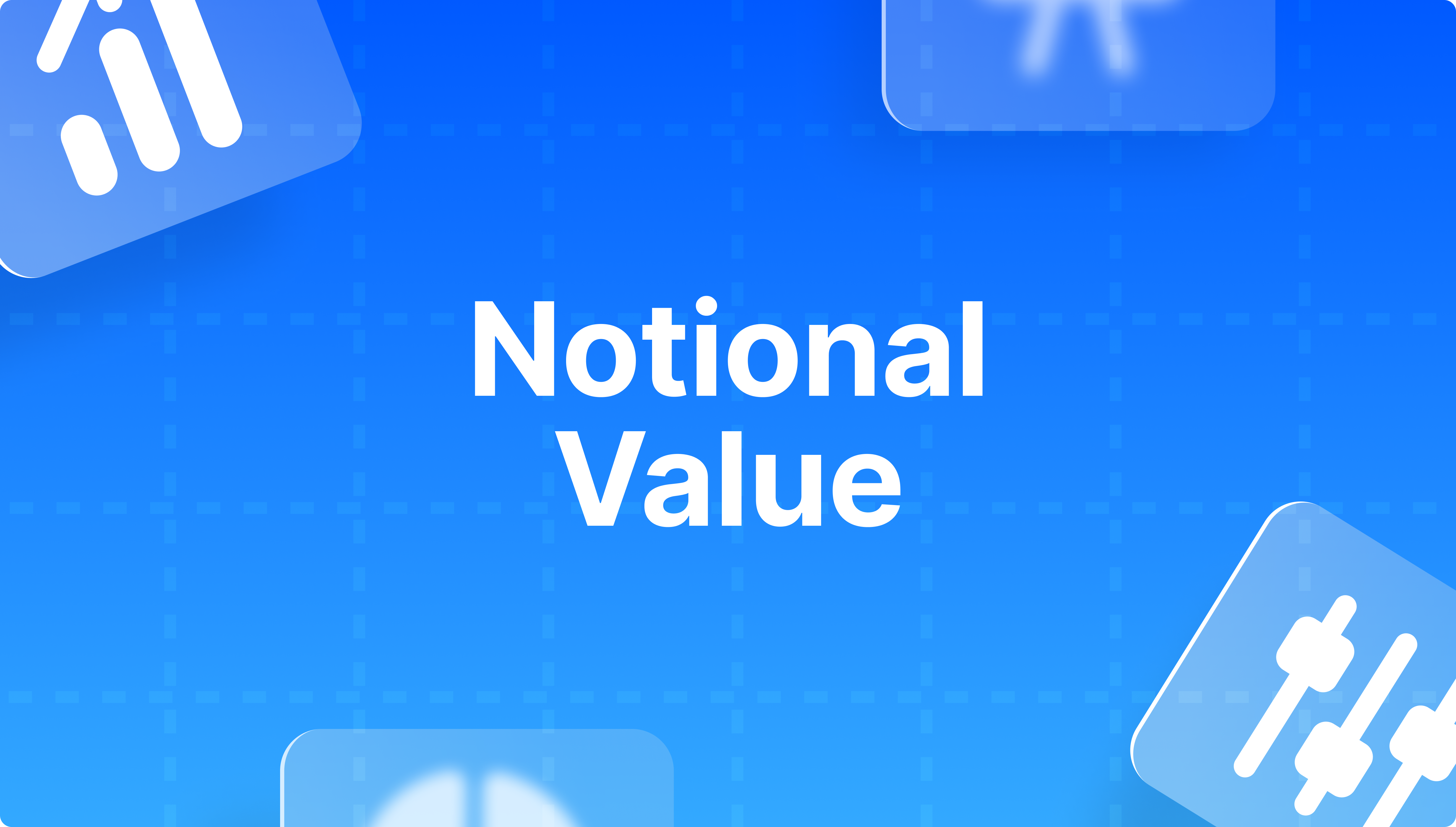Importance Of White Label Exchange Software: How Does it Work?
Articles


White label solutions, widely recognised for their adaptability, are custom-made products or services produced by one entity and rebranded by another to appear uniquely theirs. A clear example is the white label cryptocurrency exchange, a readily available, modifiable platform enabling businesses to create fully functional exchange ecosystems. These solutions support various features, such as cryptocurrency trading, fiat-crypto conversions, staking, and storage.
This off-the-shelf software provides a streamlined entry point for startups and smaller businesses to establish cryptocurrency exchanges without confronting the resource-heavy challenge of building an exchange from the ground up.
But what is the underpinning mechanism of white label exchange software, and how can businesses adopt this technology to launch their own advanced crypto exchange?
Key Takeaways
- White label solutions are customisable, pre-made systems sold and rebranded by different businesses.
- These systems offer advantages like quicker launch times, cost-effectiveness, advanced security, and hassle-free deployment.
- Top-notch white label providers, including B2BROKER, ChainUp, and PayBito, offer robust and user-friendly exchange platforms.
- Given the complexities of building an exchange from scratch, white label solutions provide a practical alternative for businesses in the crypto exchange industry.
Technical Features of White Label Exchange Software
White label exchange software is an intricate, multifunctional tool crafted to streamline business operations and enhance user engagement in digital asset trading. The software lays the groundwork for an accessible digital exchange platform where users can effortlessly buy, sell, and trade assets.
One of the key features is a user-friendly interface designed to accommodate both seasoned traders and novices. This facilitates ease of navigation and transactional operations, fostering an efficient trading experience.
The integrated wallet is an integral component of the software, which permits users to securely store, transfer, and receive digital assets directly within the platform, enhancing user convenience and fortifying security measures.
Additionally, the software often includes advanced reporting and analytics tools, offering insightful data on trading patterns, market trends, and user behaviour. This, in turn, can inform strategic decision-making and market positioning.
The software typically supports multiple payment methods, adding flexibility and choice for users.
Automated KYC/AML checks are also commonly incorporated to ensure compliance with regulatory standards, a critical component in the financial sector.
On the backend, robust admin panels provide comprehensive management and monitoring capabilities. This allows for the seamless oversight of transactions, user management, performance tracking, and settings adjustment, facilitating efficient exchange administration.
The success of a crypto exchange largely hinges on the features offered by the software solution. Concentrating on these elements is crucial as they have numerous significant benefits that can fuel the growth and longevity of a crypto exchange.
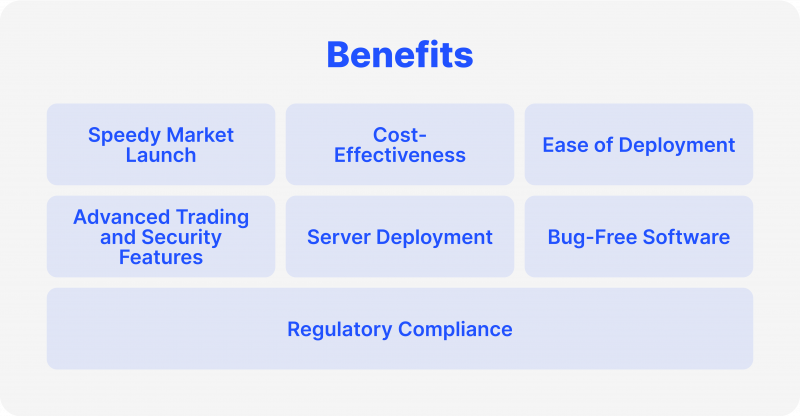
Benefits Of White Label Software
Now that we know what features could come with white label software, let’s go through all the benefits this solution can help you succeed.
Speedy Market Launch
One of the foremost benefits of white label solutions is their ability to expedite the launch of a crypto exchange dramatically. Building a custom exchange from scratch often requires a significant time investment, potentially taking months or even years. Businesses can easily solve this lengthy process issue by leveraging a white label solution.
Cost-Effectiveness
White label solutions also present a more economical alternative to building an exchange independently. This more budget-friendly option enables businesses to allocate resources to other essential areas.
Ease of Deployment
Ease of deployment is another compelling advantage of white label crypto exchanges. Once a business submits its unique requirements, developers adjust the exchange accordingly, often assisting in its set-up. This translates to a ready-to-use platform, minimising any deployment-related challenges.
Advanced Trading and Security Features
White label solutions provide access to sophisticated trading features and robust security measures, essential for any successful crypto exchange. They offer encrypted databases and stringent authentication processes, ensuring a secure exchange environment.
Server Deployment
By opting for a white label crypto exchange, the developers typically handle the process and costs associated with server deployment. This absolves businesses of these responsibilities, simplifying their path towards establishing an exchange.
Bug-Free Software
White label solutions also eliminate the risk of bugs as the software is live-tested by the production company before purchase. This assurance sidesteps potential delays and hazards that might arise with an independently built exchange, offering a smooth operational experience from the outset.
Regulatory Compliance
Lastly, confirming that the chosen white label crypto exchange software meets regulatory compliance is crucial. Key markers include KYC, MSB, AML, and CTF legislation. Ensuring these compliances are met strengthens the exchange’s security, integrity, and legitimacy, fostering trust among potential users.
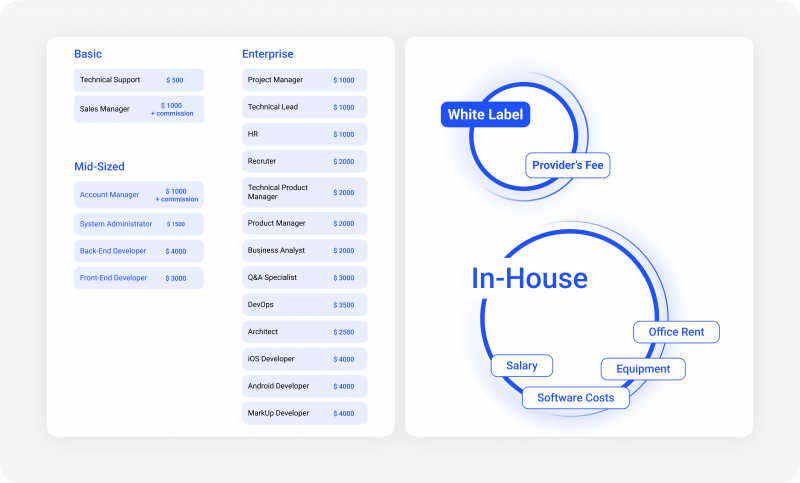
White Label vs. In-House Software Development
Whether to deploy white label software or invest in in-house software development has long been debated among businesses. However, a comparative evaluation illuminates the advantage of white label solutions.
In-house software development involves creating a custom software solution from scratch. This process requires a robust team of skilled developers and significant time investment. Companies opting for in-house development must go through several stages, from initial conceptualisation to design, coding, testing, and deployment. Post-deployment, regular updates and maintenance become an ongoing commitment.
Of course, this approach has its advantages, most notably the high level of customisation that aligns the software perfectly with a company’s unique requirements. However, the challenges and drawbacks associated with this process cannot be ignored.
Conversely, white label software is a pre-packaged, readily available solution that can also be customised at some level to meet specific business needs. This dramatically reduces the time to market, a crucial factor in the digital business landscape.
Financially, in-house development can significantly drain resources. The costs of assembling a skilled team, procuring necessary infrastructure, and conducting continual maintenance can be staggering. Therefore, while businesses might need to invest over $100,000 to create their own exchange, white label software typically costs much less and has a precise, one-time cost, resulting in considerable savings.
Moreover, while white label software brings the benefit of expertise and experience, this is often not the case for in-house development. Creating a similar level of sophistication in-house would require substantial technical know-how, a challenge for many businesses.
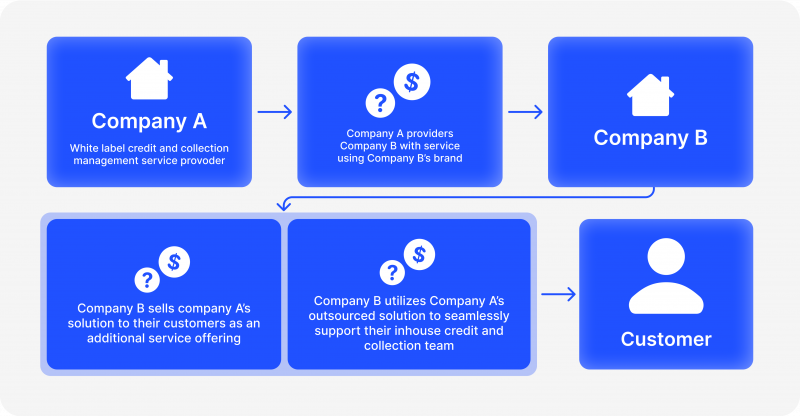
Working Mechanism of White Label Software
Understanding the working mechanism of white label software can be effectively broken down into five distinct steps:
Step 1: Acquisition
The process begins with a company purchasing the rights to the software from a white label software provider. This software is fully developed, rigorously tested, and ready for immediate deployment.
Step 2: Customisation
Once acquired, the software can be customised to fit the purchasing company’s needs and branding requirements. Logos, colour schemes, and other design elements can be altered to establish a consistent brand identity across all platforms.
Step 3: Integration and Deployment
After customisation, the white label software is integrated into the purchasing company’s existing system. With assistance from the white label software provider, the product can go live, ensuring a smooth and seamless transition.
Step 4: Operation and Management
After deployment, the white label software operates efficiently behind the scenes. The comprehensive admin panel allows close monitoring of all operations, including transaction tracking, user management, settings adjustment, and performance metric evaluation.
Step 5: Data Analysis
Most white label software comes equipped with advanced analytics tools. These tools generate valuable insights into user behaviours and market trends, empowering companies to make data-driven strategic decisions and improve their competitive position in the market.
Choosing the Right White Label Software
Opting for white label software is a strategic decision, but selecting the right solution that aligns with your business goals and operational requirements is equally critical. Here is a four-step guide to assist in this critical process:
Step 1: Define Your Requirements
Start by articulating your specific needs and objectives. This step should comprehensively analyse your operational procedures, target audience, and long-term business strategy. The more precise you are about your requirements, the easier it will be to find white label software that fulfils them.
Step 2: Conduct Market Research
The next step involves an in-depth survey of available white label solutions. Comparing different providers based on their offerings, pricing, and customer reviews will give you a clearer perspective and allow you to shortlist potential candidates.
Step 3: Evaluate Provider Credentials
After shortlisting potential providers, review their credentials. Look for their track record, expertise, and customer feedback. Understanding their reputation in the industry will provide insight into the reliability and quality of their products.
Step 4: Request a Demo
Before finalising the choice, request a product demo. This hands-on experience will give you a practical understanding of the software’s usability, features, and customisation capabilities.
Top 3 White Label Software Solutions To Build An Exchange
Selecting the right provider for your white label software is crucial for a successful exchange. Here are three top white label software solutions available in the market:
1. B2Broker
Founded in 2014, B2Broker is a leader in white label exchange solutions, combining exceptional quality and advanced technology for a seamless user experience. It has rapidly gained popularity and reliability in the industry.
B2BROKER provides several noteworthy features:
- Efficient Customisation: As an administrator, you can conveniently incorporate widgets into B2BROKER and adjust them to your schedule and preferences.
- Versatile API Connections: The platform supports various API connection methods, including REST and WebSocket, for user-friendly operations.
- High-Speed Matching Engine: B2Broker’s matching engine can efficiently process up to 30,000 requests per second, ensuring swift transactions.
- Strict KYC Authentication: B2BROKER has a rigorous KYC authentication process for smooth and secure transactions.
- Extensive Liquidity: B2BROKER supports all derivative management solutions backed by substantial liquidity pools.
2. ChainUp
ChainUp is another globally recognised white label crypto exchange provider. Its SaaS financial model allows easy implementation of comprehensive or specific modules, such as User-to-Contract transactions, over-the-counter (OTC) transactions, and more.
Here are some key features of ChainUp:
- Robust Security: The company offers a network-wide DDoS defence mechanism and a three-layer wallet infrastructure for enhanced security.
- High-Capacity Matching Mechanism: ChainUp’s trading platform can handle 50,000 transactions per second.
- Secure Crypto Loans: Its algorithmically audited built-in mechanism enables secure short or long-term crypto loans.
3. PayBito
PayBito is another leading global crypto exchange platform developed, designed, and managed by a team of experts in digital asset trading, blockchain technology, and banking security systems.
Some standout features of PayBito are:
- Cutting-Edge Architecture: PayBito is known for its advanced architecture that provides regular updates and superior security.
- Comprehensive White Label Products: The company offers rebates on its white-label products, which include SegWit, 3-point architecture, ERC20, 2FC, crypto banking, multi-signature wallets, data encryption, BIP32, and more.
- Diverse Solutions: PayBito’s solutions encompass white-label crypto exchange solutions, exchange affiliates, a white-label payment gateway, and coin listings.
Final Remarks
When starting a brokerage service, there are typically two main routes to consider: using a ready-made solution (white label technology) or building your exchange system from scratch. The second option allows for more personalisation, but it can also mean higher costs, more complex planning and ongoing spending on maintenance and updates.
Given these challenges, many businesses are turning to white label solutions as a more straightforward, affordable, faster, and tried-and-true option for managing crypto-related operations.
White label solutions are becoming popular for many businesses seeking to establish their presence in the crypto exchange business.










